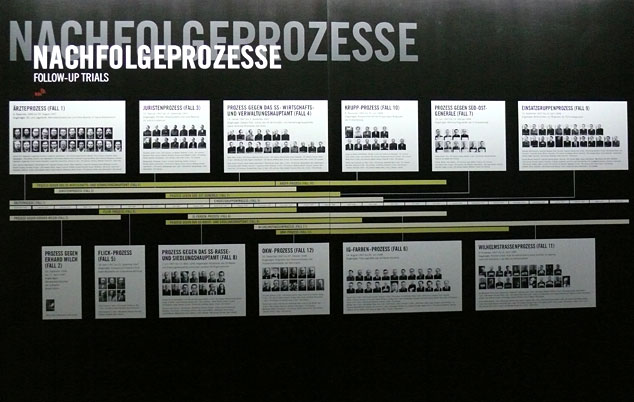
The legal prosecution of Nazi crimes in Germany did not end with the announcement of the verdicts in the Major War Criminals Trial. In December 1945, the Allies had already established, by way of Control Council Law No. 10, a uniform legal basis for the prosecution of war crimes in the respective occupation zones, which also formed the basis for the Subsequent Nuremberg Trials (1946–1949).
Unlike the Major War Criminals Trial, which was conducted before an international military tribunal, these trials were conducted exclusively before U.S. military tribunals. These 12 trials were held between 1946 and 1949 in Nuremberg against 177 high-ranking physicians, judges, industrialists, SS commanders and police commanders, military personnel, civil servants, and diplomats. The trials revealed the extent to which the German leadership class supported the power system of the Nazi dictatorship.
Of the 177 defendants, 24 were sentenced to death, 20 to lifelong imprisonment, and 98 to long prison terms in many cases. Twenty five defendants were found not guilty. Many of the condemned Nazi criminals were released from prison early in the 1950s as a result of pardons. Thirteen of the 24 death sentences were executedt.
- Doctors' Trial
- Milch Trial
- Judges' Trial
- Pohl Trial
- Flick Trial
- IG-Farben Trial
- Hostages Trial
- RuSHA Trial
- Einsatzgruppen Trial
- Krupp Trial
- Wilhelmstrasse Trial
- High Command Trial



